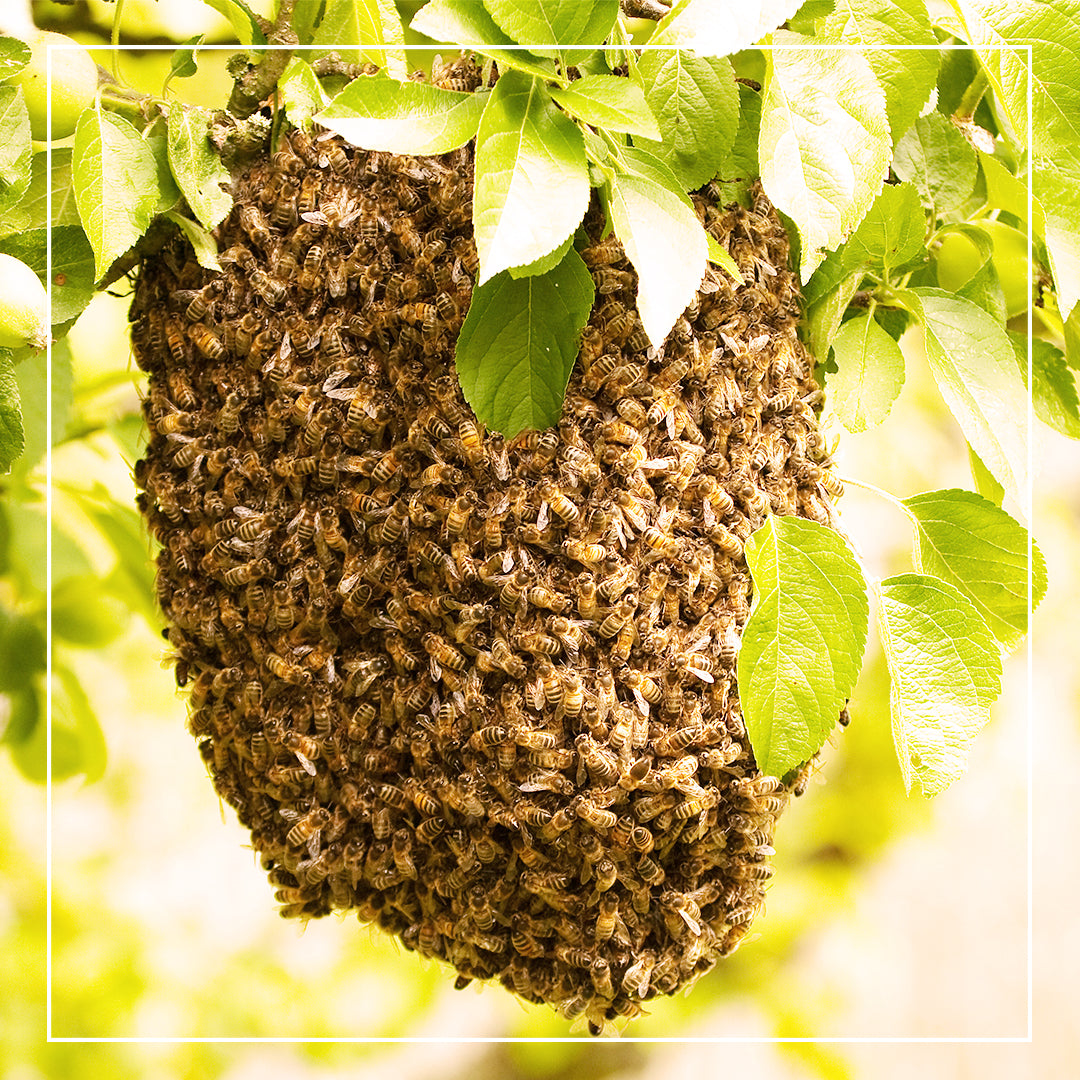
Swarming bees
Share

Bee swarms occur naturally around September, or sometimes as early as mid-August if conditions are good.
Swarming is the bee’s natural instinct to multiply, and while this is a natural event it is usually discouraged by beekeepers because it depletes their hives of workers and reduces honey production for a while.
Factors causing swarming: Congestion in the hive.
In spring, when the weather warms up and there is plenty of pollen and nectar around the queen increases her laying to up to 2000 eggs a day, so very soon, within 21 days, these young bees hatch and the hive soon becomes over crowded. Often, on hot days you will see the bees “bearding” on the front of the hive. This can be a sign that the bees are overcrowded and could soon swarm.

What to do? Ensure the bees have plenty of room.
Take two or three frames if brood from the brood box, shake off the bees and move these up above the excluder and into the honey super. The reason for shaking the bees off the frame is to ensure you don’t accidentally transfer the queen with the frame.
Replace the frames you have removed with frames of foundation, alternating these with existing frames. This immediately reduces congestion and gives the bees something to keep them occupied. At this time of the year it is also a good idea to add another box of frames. Once the honey flow starts they will fill a second super in no time.

Inspect each frame for queen cells; these are peanut looking cells hanging down from the brood frames, often on the bottom, but sometimes on the sides of the frame.
During your inspection you will also see queen cups; these are wax cups on the frame made by the bees. Just take a look inside to check if there is royal jelly and possibly any larvae. The presence of young larvae in these cups is usually the first sign of a potential swarm.

If you do find queen cells don’t just destroy them, the hive may have already swarmed and it will need these cells to reproduce a new queen. Destroying the cells does not prevent swarming, it just delays the event as the bees are already in swarming mode and they will simply build further queen cells. Check for the old queen and if you can find her in the hive you can produce and artificial swarm by removing her along with a few frames of brood; plus a frame of Honey and a frame of pollen and place these in a new hive box or a nuc box. Within a few weeks you will have a new hive.
When you transfer the queen and brood frames to a new box make sure there are no queen cells on those frames.

Note: It takes nine days after capping for the new queen to emerge. The old queen always leaves with the swarm before the new queen emerges. So, swarming occurs between 1- 9 days after capping of the first queen cell.
A further precaution to prevent swarming is to re-queen your hive each autumn so you are starting the season with a new queen which is less likely to swarm. However, if you are happy with your old queen then use your discretion and keep her for one more season. It’s up to you.
